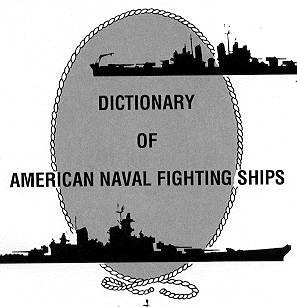
Lake Champlain is a natural freshwater lake in North America mainly within the borders of the United States but partially situated across the Canada–U.S. border, in the Canadian province of Quebec.

The Battle of Plattsburgh, also known as the Battle of Lake Champlain, ended the final invasion of the northern states of the United States during the War of 1812. A British army under Lieutenant General Sir George Prévost and a naval squadron under Captain George Downie converged on the lakeside town of Plattsburgh, which was defended by New York and Vermont militia and detachments of regular troops of the United States Army, all under the command of Brigadier General Alexander Macomb, and ships commanded by Master Commandant Thomas Macdonough.

USS Lake Champlain (CV/CVA/CVS-39) was one of 24 Essex-class aircraft carriers completed during or shortly after World War II for the United States Navy. She was the second US Navy ship to bear the name, and was named for the Battle of Lake Champlain in the War of 1812.

The first USS Ticonderoga was a schooner in the United States Navy. Ticonderoga was built as a steamer in 1814 at Vergennes, Vermont. She was purchased by the Navy at Lake Champlain, converted to schooner rigging, and relaunched on 12 May 1814. She was the first of several U.S. Navy vessel to bear the name Ticonderoga.
USS Growler (1812-2), was a 112-ton sloop, armed with ten 18-pounders and one 6-pounder, during the War of 1812. Growler was purchased on Lake Champlain in 1812. The British captured her in 1813 and renamed her HMS Chub or Chubb. The Americans recaptured her at the Battle of Lake Champlain. She was sold in 1815.
USS Eagle, a brig, was launched 11 August 1814 as Surprise at Vergennes, Vermont, by Adam and Noah Brown. She was renamed Eagle 6 September and placed under the command of Lieutenant R. Henley.
USS Eagle, a sloop, was a merchant ship purchased at Vergennes, Vermont on Lake Champlain in 1812 and fitted for United States naval service. The British captured her in 1813 and renamed her HMS Finch, only to lose her back to the Americans at the Battle of Lake Champlain in 1814. She was sold in 1815.
USS Saratoga, named for the Battles of Saratoga, was a corvette built in Vergennes, Vermont, for service on Lake Champlain in the War of 1812.
USS Ludlow has been the name of three ships in the United States Navy. The second and third ships were named for Lieutenant Augustus C. Ludlow.
HMS Confiance was a 36-gun fifth-rate frigate that served in the Royal Navy on Lake Champlain during the War of 1812. Confiance served as Captain George Downie's flagship at the Battle of Plattsburgh, on 11 September 1814. Surrendered to the American Squadron following a nearly 2½ hour battle, she was eventually taken to Whitehall, New York where she was taken into the U.S. Navy and placed in ordinary. The vessel was formally abandoned by the Navy in 1820 and after being partially salvaged, was allowed to sink at her moorings. As a danger to navigation, the sunken hulk was destroyed with dynamite charges during dredging operations on the channel in 1873.
HMS Linnet was a 16-gun brig, built in 1814 by the Royal Navy at Ile aux Noix, Canada, as Niagara. Renamed Linnet and commanded by Commander Daniel Pring, RN, she served on Lake Champlain during the War of 1812. The Americans captured her in 1814 at the Battle of Lake Champlain at Plattsburgh, New York, and took her into service though she never sailed again. She was sold in 1825.

Plattsburgh Air Force Base is a former United States Air Force Strategic Air Command (SAC) base covering 3,447 acres (13.7 km²) in the extreme northeast corner of New York, 20 miles (32 km) south of the Canada–United States border, located on the western shore of Lake Champlain opposite Burlington, Vermont, in the city of Plattsburgh, New York.

HMS Wolfe was a 20-gun sloop-of-war, launched at the Kingston Royal Naval Dockyard at Kingston, Upper Canada, on 22 April 1813. She served in the British naval squadron in several engagements on Lake Ontario during the War of 1812. Upon her launch, Wolfe was made the flagship of the squadron until larger vessels became available. Along with the naval engagements on Lake Ontario, Wolfe supported land operations in the Niagara region and at the Battle of Fort Oswego. Following the war, the vessel was laid up in reserve and eventually sold in 1832.

Provincial Marine was a coastal protection service in charge of the waters in the Great Lakes, the St. Lawrence River and parts of Lake Champlain under British control. While ships of the Provincial Marine were designated HMS, they were operated in more of a coast guard manner than as a full-fledged navy. Operations were maintained and staffed by the Royal Navy. Most ships of the Provincial Marine were built in the Great Lakes.
USS Preble (1813), sometimes called Commodore Preble, was the first ship of the United States Navy named for Commodore Edward Preble. A sloop purchased on Lake Champlain in 1813, she was commissioned 6 August 1813, Lt. Charles Augustus Budd in command. Operating with Commodore Macdonough's squadron, she participated in the Battle of Lake Champlain, 11 September, which gave control of that lake to the Americans and forced General Prevost to retire back to Canada. Laid up after the battle, Preble was sold at Whitehall, New York, in July 1815.
USS Wasp was a sloop that served in the U.S. Navy from 1813 to 1814.
USS Viper was a heavily armed row galley commissioned by the United States Navy for service in the War of 1812. She was successful in her operations against the British on Lake Champlain, and was retired after the war.
USS Frances was a United States Navy sloop in commission from 1813 to 1814.








